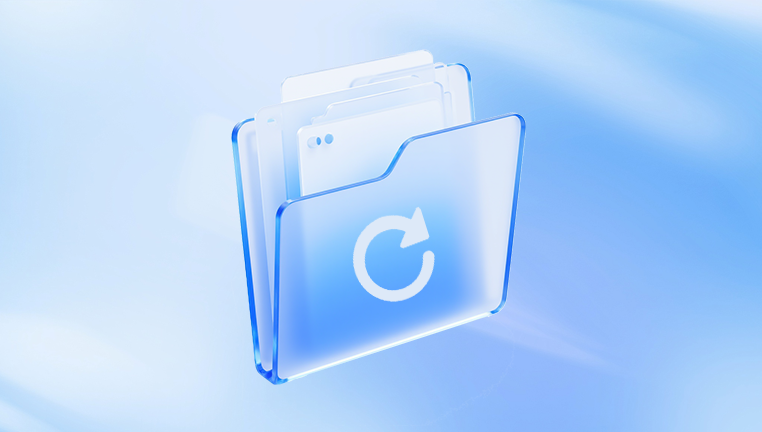Maybe your computer freezes. Maybe the power cuts out. Maybe you accidentally click “Don’t Save” when prompted to close Word. Or maybe, you can’t even remember where you saved the file, and now it’s nowhere to be found. In that split second, your focus shifts from your work to a single anxious thought: How do I get it back?
The truth is, losing a Microsoft Word document is frustrating, but it’s not always the end of the story. Word has several built-in safety nets AutoRecover, AutoSave, backup copies and your operating system has its own recovery options. Even if those fail, specialized recovery tools can often dig into your storage drive and find the missing file.
Accidental deletion – Sending the file to the Recycle Bin or Trash and then emptying it.
Closing without saving – Clicking “Don’t Save” by mistake.
Application crash – Word or the operating system suddenly stops working.

Power outage – Losing power before saving changes.
File corruption – Damage due to hardware errors, malware, or improper shutdown.
Saving in an unknown location – Forgetting where the file was stored.
Overwriting – Saving another document under the same name.
Knowing the cause will help you choose the right recovery method.
Step 1: Search for the File
Sometimes, the file isn’t lost — it’s just hiding in a different location.
Windows
Press Windows + S to open the search bar.
Type the file name (or part of it) and press Enter.
If you can’t remember the name, search for all Word files by typing:
CopyEdit
*.docx
or
CopyEdit
*.doc
Sort results by “Date Modified” to see the most recent files.
Mac
Press Command + Space to open Spotlight.
Type the file name or search for:
makefile
CopyEdit
kind:Word
Use Finder to sort by date and check recent folders.
Step 2: Check Word’s Recent Documents List
Word keeps a quick-access list of files you’ve worked on recently.
Open Microsoft Word.
Go to File > Open.
Under Recent Documents, scroll to find your file.
If found, open it and immediately save it to a known location.
Step 3: Recover Unsaved Documents Using AutoRecover
AutoRecover is Word’s built-in feature that periodically saves your work.
Windows
Open Word.
Go to File > Options > Save.
Note the folder listed under AutoRecover file location.
Open File Explorer and navigate to that folder.
Look for files ending in .asd.
Open the file in Word and save it with a new name.
Mac
Open Word.
Go to Word > Preferences > File Locations.
Find AutoRecover files and open that folder in Finder.
Locate .asd files and open them in Word.
Step 4: Recover from the Document Recovery Pane
If Word crashed, it may automatically open with the Document Recovery pane.
Look at the left side of the Word window after reopening the program.
Click the most recent “Recovered” version.
Save it immediately.
Step 5: Check the Recycle Bin or Trash
Your file might still be there.
Windows
Double-click the Recycle Bin.
Search for your file name or .docx.
If found, right-click and choose Restore.
Mac
Click the Trash icon in the Dock.
Search for your file.
Right-click and choose Put Back.
Step 6: Look for Temporary Files
Word often creates temporary files while you’re working.
Windows
Open File Explorer.
Go to:
mathematica
CopyEdit
C:\Users\[YourName]\AppData\Local\Microsoft\Office\UnsavedFiles
Look for .asd or .wbk files.
Mac
Open Finder.
Select Go > Go to Folder.
Enter:
csharp
CopyEdit
/private/var/folders
Search for Word-related temp files.
Step 7: Recover from Backup Copies
If you enabled “Always create backup copy” in Word, you may find .wbk files.
Search your system for:
CopyEdit
*.wbk
Open the backup in Word and save under a new name.
Step 8: Restore Previous Versions
Windows
Right-click the folder where your document was last saved.
Choose Restore previous versions.
Select a version from before the loss and restore it.
Mac (Time Machine)
Connect your backup drive.
Open the folder where the file was last stored.
Launch Time Machine and scroll to a date before the file went missing.
Restore the file.
Step 9: Use OneDrive or Other Cloud Storage
If you save to the cloud, you may find your document there.
Log into your OneDrive, Google Drive, or Dropbox account.
Search for your file name.
Check Version History to restore earlier versions.
Step 10: Try Data Recovery Software
Drecov Data Recovery
When a Word document goes missing, it often isn’t truly gone the data may still exist on your storage device until it’s overwritten. Drecov Data Recovery searches deep within your drive, locating recoverable fragments of .doc and .docx files and reconstructing them into usable documents. This works for files lost through accidental deletion, formatting errors, partition loss, or unexpected shutdowns.
Using Drecov Data Recovery is simple. Launch the software, select the drive or location where the Word document was stored, and choose between a quick scan for recently deleted files or a deep scan for harder-to-find data. Once scanning is complete, the program lists recoverable files, allowing you to preview them before restoring. This preview feature ensures you can identify the correct version of your Word document before recovery.
Drecov Data Recovery supports a wide range of storage media, including internal hard drives, SSDs, USB flash drives, and memory cards. Its free version provides essential recovery features without cost, making it an excellent solution for urgent document restoration.
Step 11: Tips to Increase Recovery Success
Stop using the drive where the file was stored.
Save recovered files to a different location.
Act quickly time matters in file recovery.
Step 12: Prevent Future Word Document Loss
Enable AutoSave if using OneDrive.
Set AutoRecover to save every 5 minutes.
Use cloud backups and external drives.
Keep multiple file versions.
A lost Word document doesn’t have to be the end of your work. Between Word’s built-in recovery features, your operating system’s backup tools, and dedicated recovery software, there’s a strong chance you can get it back. The key is to act quickly, check every possible location, and understand how these recovery systems work. And once your document is safely restored, take proactive steps to ensure your future files are always protected.




